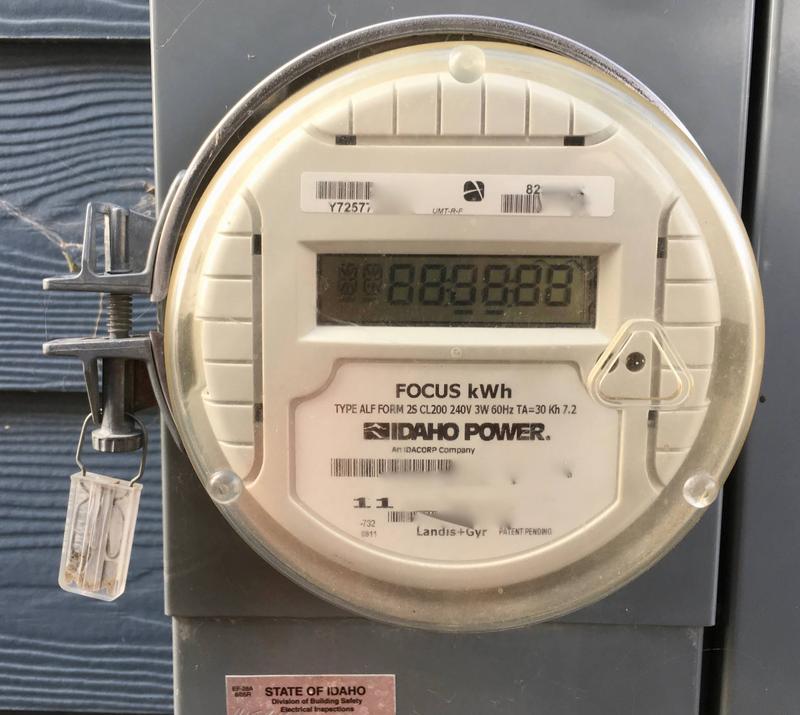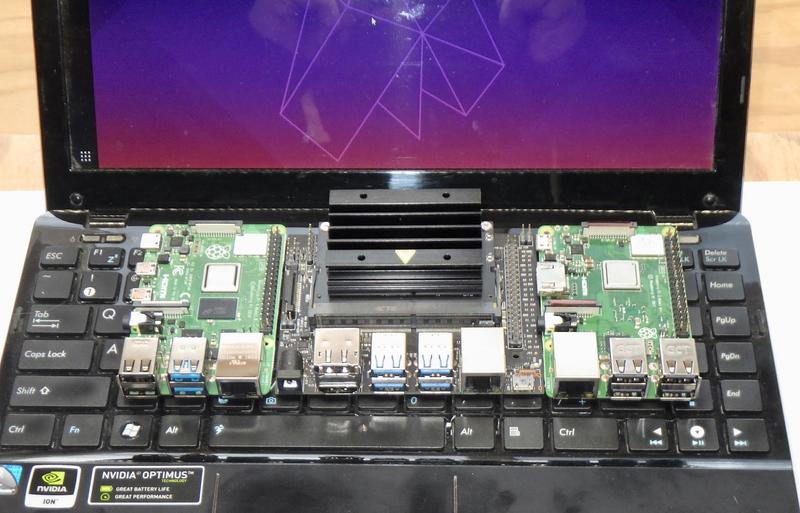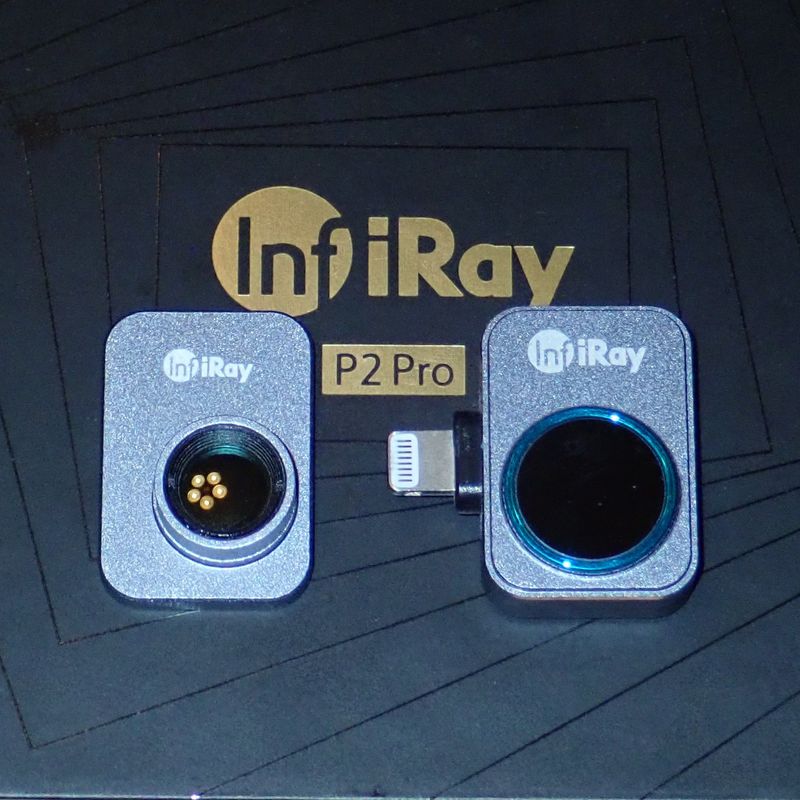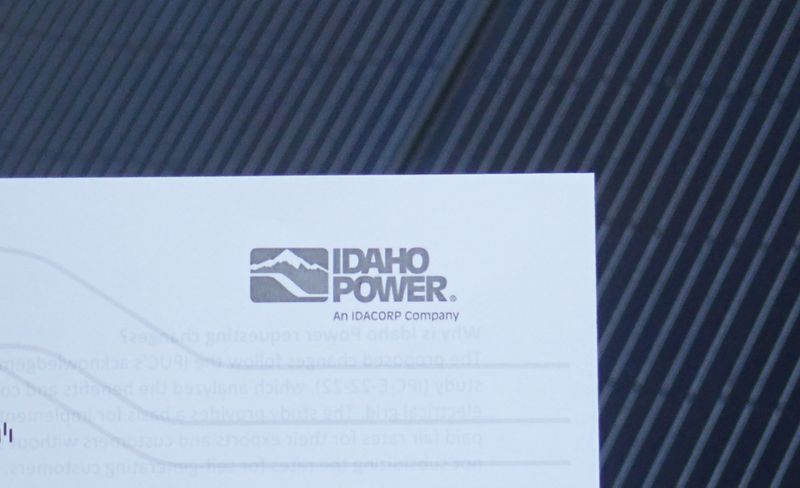One recent area of interest to me is net metering of homeowner-installed energy generation systems - and what’s likely to replace it in the long term. I’m in the process of designing a solar and energy storage system for my property, and I like to design for the long term - a 20-30 year design life of the installed hardware, with a refresh around then (hopefully) to carry the system for the rest of my life. I optimistically have another 60 years to live, and I don’t plan to move at any point in those 60 years (or, at least, will have an operating home base here), so designing long term systems is an interesting challenge.
Before wading into the waters of designing grid-tied home solar, I sat down and did an awful lot of reading on net metering, the various replacements for it, power grid issues, and all that sort of great evening reading (which I do genuinely enjoy). There are many problems with net metering, long term, and I expect it’s going to disappear within the design life of my system. It’s actively in the process of disappearing in a lot of places, mine included. So, how does one design a system for a somewhat unknown future? Sample the likely options and see how one’s design fares against all or most of them!
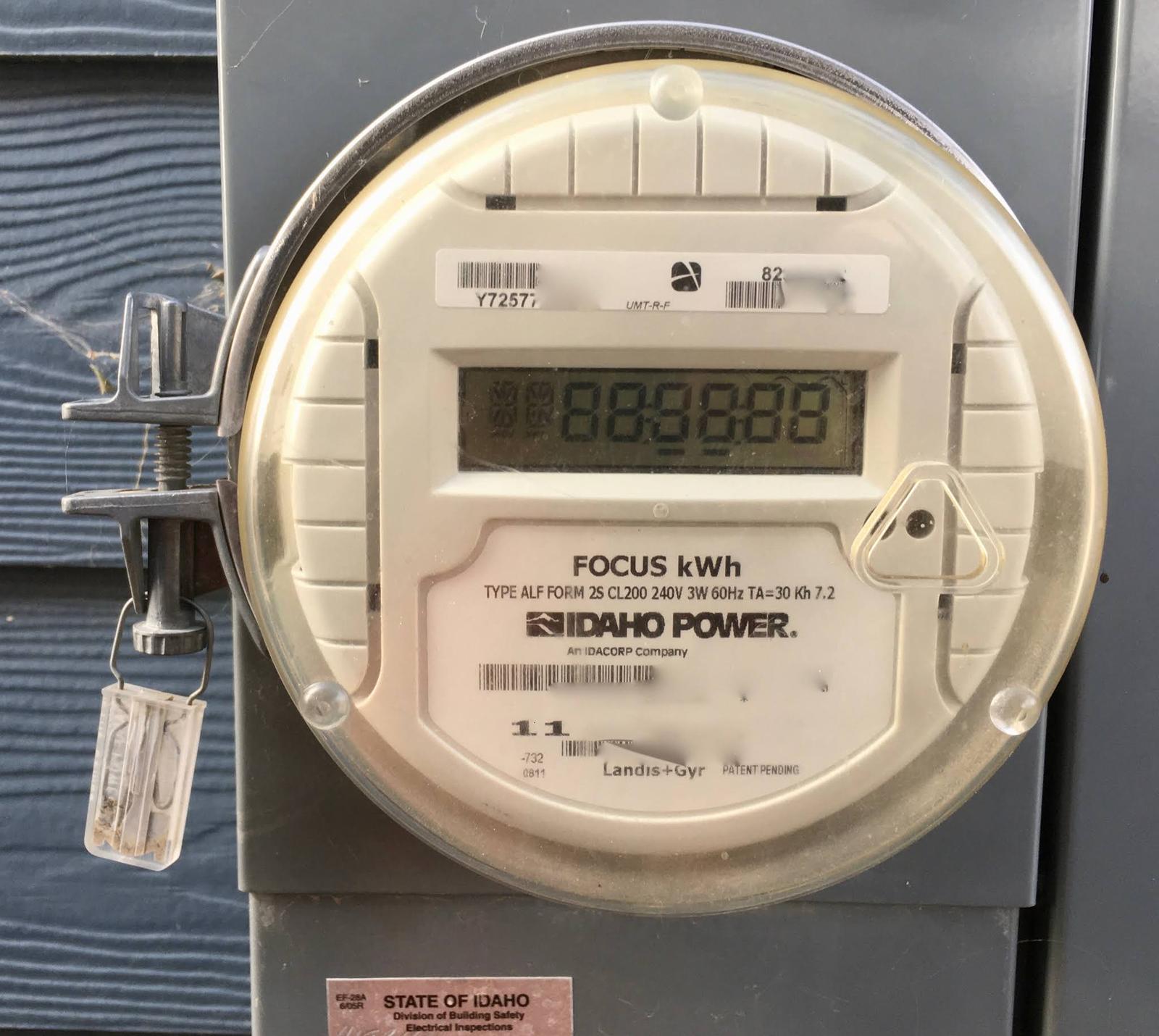
Interested? You should be! Net metering is an important part of the future of the power grid - and how it’s done has a massive impact on how sustainable power systems will be!
Net Metering
Net metering is an arrangement for grid-connected DERs (Distributed Energy Resources, in this case normally homeowners with rooftop solar or small scale wind) in which all their generated power is “theirs” to use, when they so feel the need. It’s typically implemented as a kWh credit on a monthly power bill. If I export power to the grid, my meter runs backwards, and if I pull power from the grid, the meter runs forwards. I’m billed on the “net” at the end of a period, if I’ve consume more than I generated, or I get some variety of credit (either $ or kWh) if I generate more than I consume in the period.
While some net metering policies zero the surplus credits at some point (monthly or annually - it amounts to a donation of your surplus generation to the power company), on most net metering agreements, this means that if I generate an extra few MWh of power during the summer, I get to use them in the winter, without paying a dime (because they’re “mine”). It also means that, throughout any given period of time, the only real thing that matters is the net energy used. If I suck 10kWh from the grid in the morning, export 30kWh during the peak of the day when nobody is home, and pull 10kWh from the grid in the evening, my net use for the day (which is what I’m billed on) is -10kWh - which I can then use in 6 months.
At one level, this sounds reasonable - I’m not, net, using any power, so I shouldn’t have to pay anything. But making this argument (which you’ll hear quite a lot) requires a poor understanding of the costs in delivering power. One kWh of energy typically costs the power company $0.02 - $0.04 - the rest of the residential rate is the transmission and distribution network costs! Despite not using any net energy, I’ve pushed 50kWh through my meter during that hypothetical day, I rely on the grid for servicing peak demand and covering sags in solar output, and, generally, I make heavy use of the grid connection while paying nothing for it. That’s a problem.
It’s even worse if I’m storing energy seasonally. I can casually push a few MWh extra on the grid in the summer, and use that exact same number of MWh, for free, in the winter, when my panels aren’t producing anything. That’s very definitely using the grid - and it’s using it as a perfect, infinite battery. I’ve yet to find a battery that lets me store as many kWh as I want, for free, for as long as I want - but that’s what net metering offers. It’s a great deal for the homeowner, but it’s not something that scales past a few weirdos using it.
I’m aware that there exist various programs for net metering out there, but if I’m using the phrase “net metering” without any other expansion, I’m referring to a 1:1 kWh credit that doesn’t expire. I’ll dive into details further along this post.
Yes, I DO Like Solar! And the Grid!
Around this time on certain sites, people usually start calling me a “fossil fuel shill” and all sorts of nasty names. Since I’m not blindly 100% pro-homeowner-solar and anti-evil-power-company, clearly I’m in favor of burning fossil fuels, and therefore some variety of awful. If I were to be a fossil fuel shill, the checks seem to be missing in the mail…
I mean, I do have a bottle of crude, which I kept on my desk next to a diesel engine piston and radial engine valve at one point when I was working with a collection of Tesla owners - just because it was fun conversation piece. On the other hand, I could (and did) legitimately refer to the Teslas as “electron guzzlers,” because I was commuting on electric bike and used 1/10th the energy per mile that an electric car uses. And now I have no commute at all, because I do my work from a solar powered shed on my property.

I like solar an awful lot. But I also really like the power grid. I deal with the actual realities of off-grid power in my office (as opposed to the handwaves about it that people tend to make on the internet), and I’m interested in solutions that involve renewable energy - but that also solutions that keep the power grid running and well maintained.
Like it or not, the reality is that if a large number of customers on a particular power grid were using it for free, that grid would eventually collapse from lack of maintenance funds. Plus, the amount of solar that the grid can take is actually quite limited if rooftop generation is just a rogue generator that exports as much as possible at any given minute (instead of being controlled like another generation resource). Yes, I’m entirely aware of the various “virtual power plant” concepts floated around integrating distributed storage, but the reality is that they don’t meaningfully exist in the wild, and probably won’t for a very long time.
So: I’m not a big fan of the fossil fuel industry, but I’m also grounded in the reality that our power grid does not work without reliable generation and second to second matching of generation and use.
Net Metering: Unfair?
What 1:1 net metering works out to, in practice, is the following: I get to push a kWh onto the grid whenever I find it convenient for me, and in exchange, I get to pull a kWh from the grid - also whenever I find it convenient for me. For free. It’s really an amazing deal - but it’s not the sort of thing that makes for a stable, well maintained power grid if more and more people use it, because it involves using the grid services literally for free if you have solar on your house.
The power grid isn’t just a system where some generators push some power on, and a lot of consumers pull some power off. It’s a balanced system that maintains an insanely accurate frequency, voltage, can handle a wide range of failures (usually without anyone noticing), and is easily the largest set of machines humans have produced (in terms of geographic area, nothing else comes close).
Though if you happen to know of a good western interconnect frequency counter, let me know, because I’m pretty sure it loses quite a few thousand cycles over the summer.
Yes, your home solar might export some power when it’s needed on the grid, but then again, it might not (your generation isn’t dispatchable, and it’s quite variable). A typical south facing array’s production is falling off in the evening right about as demand is rising, and peaks during the mid-day slump in power consumption (on most grid segments). This is what local grid demand looks like in my area - note the double peak in the morning and evening, with the mid-day trough being almost as far as the overnight trough.
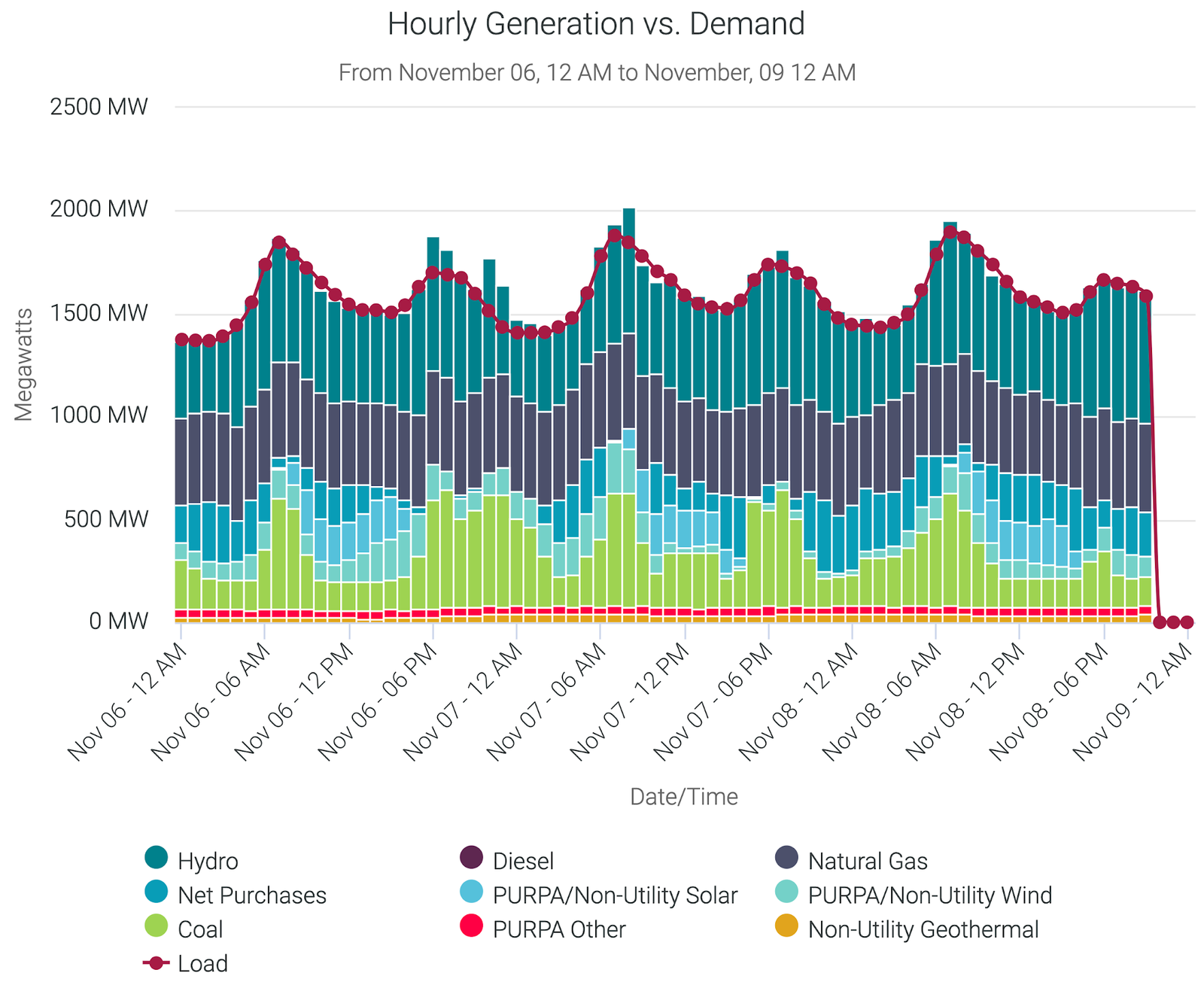
A reasonable criticism of net metering (which you hear somewhat regularly from power companies, mine included) is that it’s a handout to those with solar panels, paid for by those who don’t have them. And, in some ways, they’re right - getting to use grid infrastructure, for free, means that someone else is having to pay the grid maintenance costs for that share of the grid. There are certain benefits the grid gets from rooftop panels (and those benefits are worth something), but overall, there’s a lot of “the full capability of the power grid, but for free” going on.
Quite a few of the issues are wrapped up into the typical residential rate schedules, which are a simple-to-understand handwave at paying for your share of the transmission grid fees based on how much you use, without creating bizarre billing situations.
If you’re not familiar with how residential metering compares to demand charges for larger customers, don’t worry - I’m about to explain it!
A Residential Rate Schedule
I’m using numbers from Idaho Power, because they’re my power provider, and I’m familiar with their rate schedules (this isn’t the first time I’ve used their power numbers).
You can find their residential rate schedules online, and while the exact numbers may change over time, the same concept is likely to apply.
There’s a basic $5/mo connection fee before any power passes your meter, then you pay a per-kWh price based on the tier of usage. I’m using non-summer rates here, because it’s currently not summer as I type this - and, yes, I know we have super cheap power compared to large parts of the country. Compared to Douglass County power, though…
From 0-800kWh, 7.9¢/kWh
From 800-2000kWh, 8.7¢/kWh
Above 2000kWh, 9.7¢/kWh.
The pricing is applied to that chunk of your power - so if I were to use 3MWh in a really cold month (I don’t), I pay 7.9¢/kWh for the first 800kWh, 8.7¢/kWh for the next 1200kWh, and 9.7¢ for the last 1000kWh.
This sort of rate schedule takes into account the fact that someone using, say, 5MWh/mo (6.7kW sustained for the month) requires more grid infrastructure than someone using 500kWh/mo (670W sustained - 1/10th the average power). Plus, it creates an easy to understand bill that has the nice behaviors of “Going up as you use more power in a month” and “If you use the same amount of power in two months, your bill will be similar.” Summer/winter rate changes mean there’s some variance, but in general, a rate schedule like this is easy to understand and reason about. Industrial demand charges aren’t nearly so kind.
What are demand charges? I’m glad you asked!
Industrial Demand Rate Schedule
Looking at the Schedule 19 Primary Time of Use rates (this is for BIG customers - 1MW+ peak power draw), they make residential rates look like a rip-off - look at these crazy low per-kWh rates for Primary service (Secondary/Primary/Transmission relate to the voltage delivered and how much transformer you need onsite)!
3.9¢/kWh mid-peak
3.5¢/kWh off-peak
Why on earth do industrial customers get to pay less than half the rate of residential customers? What’s wrong? (At this point, you can imagine someone going into a spluttering rant about how power companies are gouging the little guy and just handing out power like candy to large corporations, if you wish)
What you’re missing are the other line items there:
Basic Service Charge: $299
Basic Charge Per KW: $1.26
Demand Charge Per KW: $4.48
This is where industrial schedules differ, radically, from residential (and small business) schedules - you pay separately for the energy used and the infrastructure used to deliver it. Demand charges are a fee you pay based on your highest 15 minutes of demand for the month, and the basic service charge is your highest two months of demand in the last year, averaged. You pay an awful lot every month if you require a big transformer to meet your peak power demand (kW), even if you don’t use that much actual energy (kWh).
For residential service, you can pull as much power as you want, whenever you want, and not pay for the grid capacity separately. If I used 500kWh a month, but decided to max out my home (I might manage 40kW if I got really creative), that’s fine - I don’t pay any more than if I used no more than 5kW peak. The basic service charges plus demand charges on a 40kW peak work out to $528 - before I pay for a single kWh! That’s several times my monthly power bill most months just in demand charges!
Do you know how much your home pulls, peak? I do, but only because my meter reports this out (it’s typically around 10kW). Would you like your monthly bill to change drastically based on the fact that your water heater and oven were on at the same time for 20 minutes? Most people wouldn’t.
For a demand schedule, smooth loads are encouraged, and peaky loads are penalized. But it’s a model for paying for power separately from paying for energy (power is kW, energy is kWh) - and we’ll come back to this.
The (Likely) End of Net Metering
My very strong belief is that within the 30 year design life of a typical home solar power system installed today, net metering will go away. Maybe some systems get lucky and get grandfathered in (for a while), but I expect that to be increasingly rare with time. This means that if you rely on the net metering subsidies (and it’s absolutely a subsidy for homeowner power generation) to get payback on your system, you may find yourself in a world of financial hurt in 15 years.
Given that most solar install companies I’ve talked to seem to price based on how much they can convince you you’ll pay for power in the next 30 years, I expect quite a few people to be very unhappy. And, honestly, I’d love net metering to remain as-is for the next century, but I simply don’t think that will be the case - and, with Idaho Power, they’re actively in the process of ending it. So that bet looks pretty solid to me.
Grid Defection: Our Off-Grid Dystopia
A term you might see floating around is “Grid Defection” - people deciding that the costs of remaining connected to the power grid simply aren’t worth it, and taking a formerly grid-connected structure off-grid. It’s a thing in Hawaii already, and sufficiently harsh fees for solar interconnection will typically encourage people to do this (though I expect far fewer to actually do it than threaten to do it - it’s similar in that way to the “Why, if so-and-so wins, I’ll… I’ll move to Canada!” things you hear during election season from people with zero experience in the rather significant trials and tribulations of that process).
People disconnecting from the power grid means fewer customers to pay for the grid in the same geographic area, and, again, it’s likely to be people who use more power that go this route first (leaving lower average use customers to cover the grid maintenance costs). I think the power grid is really neato (it runs computer chips - even that Dorito), and I’d like to see it continue to exist in a reliable and well maintained form, which is why I don’t think grid defection is a great idea. That said, if it becomes economically feasible, and cheaper than being grid-tied, people will do it. That would mark the end of the power grid as we know it.
Purely off grid power is also somewhat environmentally unfriendly (compared to a similar system being grid tied), because an off grid system will typically be oversized compared to a net metering system (winter has short, dark days), and there’s nothing to do with excess power in the summer - you just don’t pull it out of the panels when the battery bank is full and there’s no demand. That sort of system, exporting to the grid, would be able to power at least another house in the summer, if not more. My office operates severely demand limited most of the year - my solar panels laze along, doing very little for large parts of the year, because I simply don’t have anywhere to put the power they could potentially generate when my batteries are full and my demand is low. Though, even as heavily overpaneled as I am most of the year, I still need my generator and propane heater for the winter. Yes, I’ve heard from plenty of people who insist they won’t need one. Meanwhile, literally everyone I know with an off-grid power system has one (usually far larger than mine).
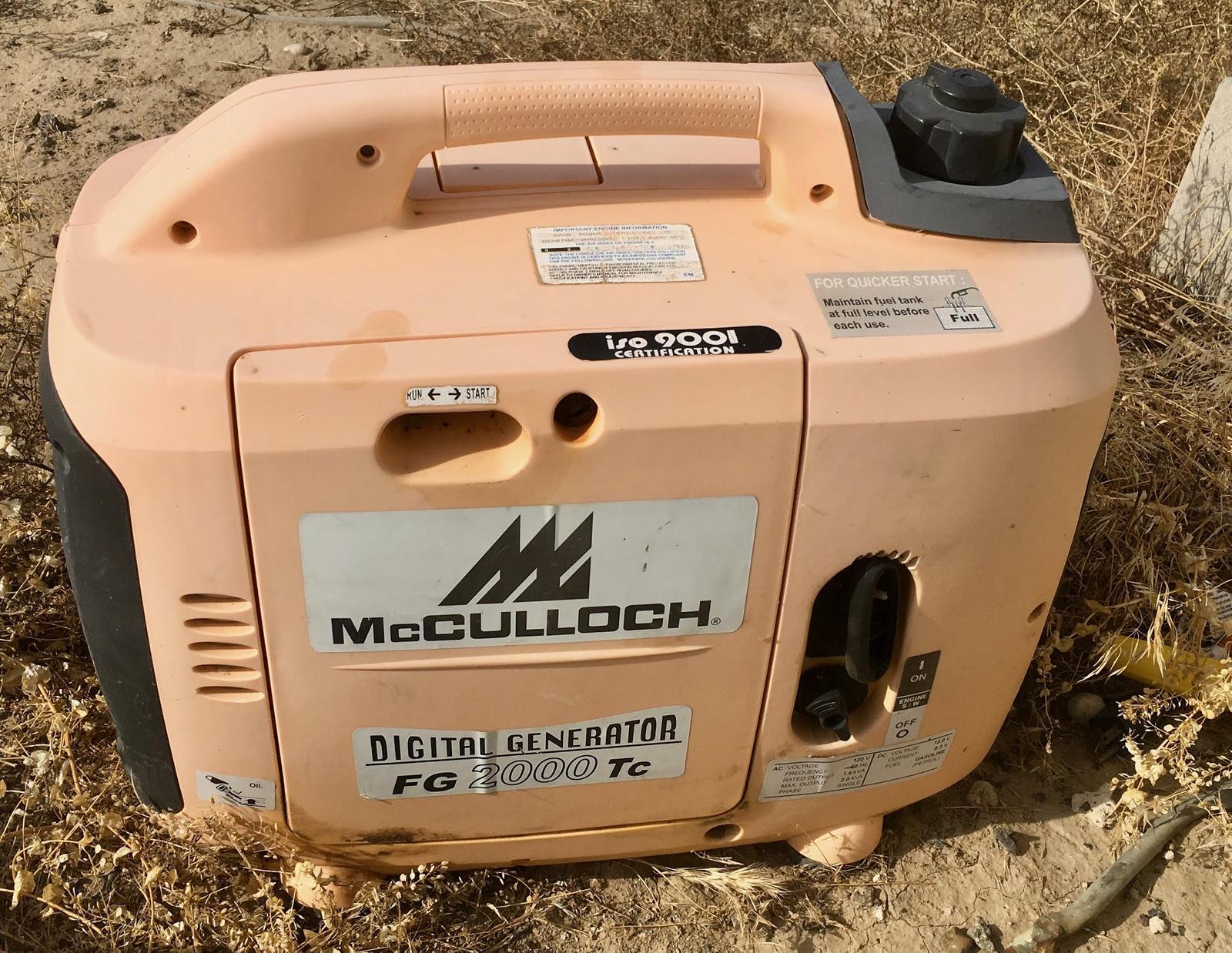
I don’t really consider widespread grid defection to be a likely problem, though. It’s harder and more expensive than it sounds. Plus, it’s really easy to stop - your local housing authority simply mandates that a habitable building requires a power grid connection. Done! Unpopular, sure, but it’s easy to solve.
Grid Friendly Solar
One of the things I expect power companies to try to incentivize, with whatever they replace net metering with, is solar power systems that are a bit more grid friendly than your typical south facing roof mount solar. It doesn’t matter that much right now, but the power companies are trying to move early to get ahead of the problems.
Grid-friendly solar, as I’m choosing to define it, is solar that more closely matches the needs of the grid, and that better matches residential demand curves. This means that production in the middle of the day isn’t worth nearly as much as production in the morning and evening (when grid demand is highest), and it also means that, all other things being equal, fewer kWh passed through the meter is better than more (if you count both directions). This means that if you can (to use the earlier example) delay some of the morning power use until the array is online, and find a way to keep the array generating into the evening, you’re more grid-friendly.
Take a look at your home’s power demand curves if your power company gives you those - you’ll almost certainly see the same sort of double peak I have. That overnight draw is car charging from a late arrival Saturday evening, and the base draw for the house is around 3000W (server, network infrastructure, etc).
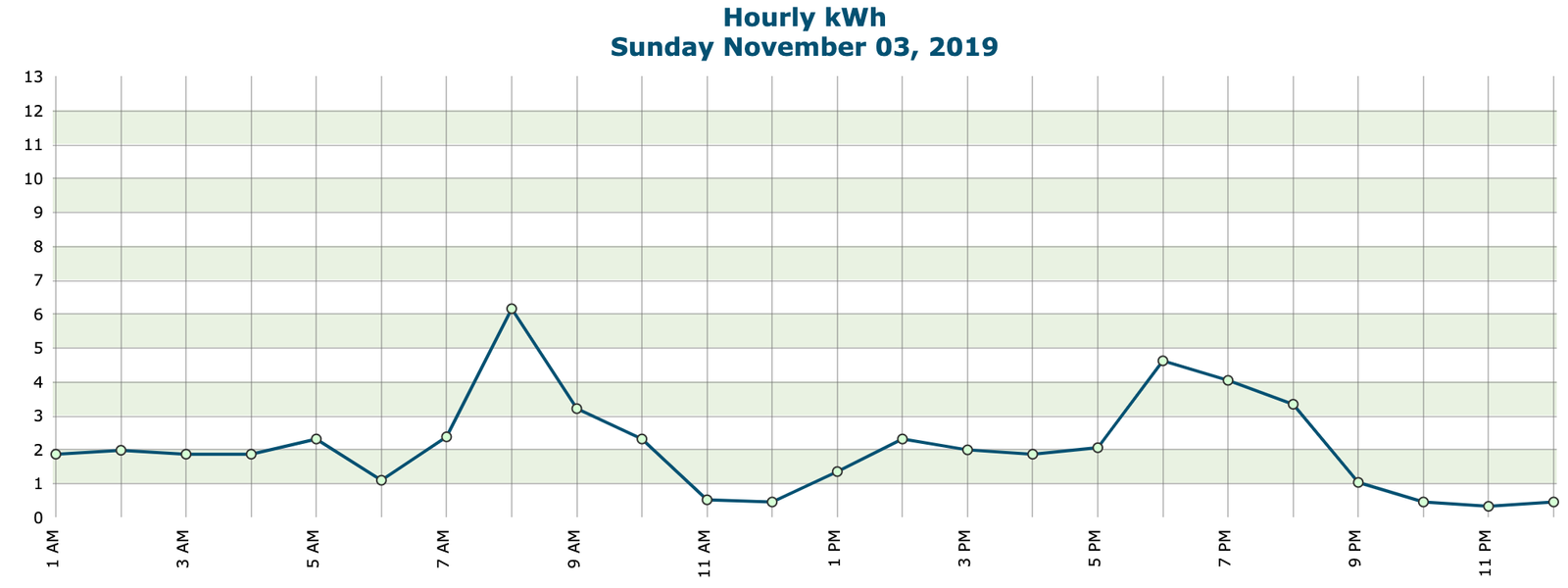
“Grid-friendly solar” is, admittedly, a bit of a handwavy term, but it’s a useful enough guide I’m considering as I go about designing systems.
With all that out of the way: Possibilities for net metering replacement!
High Base Connection Fees
One option I’m almost certain we’ll see is power companies upping the base connection fees - instead of my $5/mo for base fees, up those to $30, or $50 - something large enough to cover grid costs. It’s a fairly ham-fisted approach, but I think we’ll see plenty of attempts at it (if not long term success). The main problem is that it’s a one-size-fits-none approach, and doesn’t encourage local consumption or trying to match demand and supply. If the fees are too high, you encourage people to just go off grid (even if it doesn’t make amazing economic sense), and it’s one of those moves that’s (rightly) considered quite solar-hostile if the base fee is high enough.
For small values of base connection fees, the right answer is likely to just deal with it, because the grid connectivity is worth the costs. As those go higher, it becomes harder and harder to justify, and at some point, transitioning to an off grid system makes financial sense for homeowners. Even if it’s bad for the grid, bad for power companies, and bad for the environment.
Unfortunately, there’s not a whole lot one can do with this rate schedule, short of either dealing with it, remaining grid connected without solar, or going purely off grid.
Buy-All, Sell-All (BASA)
If utilities really want to kill off any sort of rooftop solar, though, there’s something quite a bit more hostile: Buy-All, Sell-All (BASA). In this case, you don’t connect your system in behind your meter at all - you have a separate meter that measures generated power, which gets paid out at something close to the industrial rates (it’s usually something around what commercial producers get paid), and you then pay retail rates for electricity (so, for my area, I’d expect to get 3-4¢ per kWh generated, and pay the residential rate of 8-11¢ per kWh). It doesn’t exactly incentivize solar production, and I think it goes too far the other way in trying to compensate for grid use (you pay full grid fees for power that doesn’t actually hit the grid because it’s looping before your local transformer), but it’s something that states are passing, and it’s something to consider.
In this situation, if you don’t just skip solar or go off grid, a very low cost system would be key - you’d need far more panel area to “pay your power bill” than to generate your net energy use. Plus, as I understand it, there’s no easy way to design the system such that you can operate when the grid is down. One might consider designing a system that cannot be converted to operate in this mode without significant expense.
Residential Demand Charges
A slightly more useful system would be to put solar homes on a demand charge rate schedule. You solve most of the issues by splitting out “grid costs” from “energy costs,” and still allow self consumption of energy. SRP in Arizona actually has a pilot residential demand program, so one might find some general ballpark rates in there - the split out summer and summer peak rates, which are far higher than the winter rates, and there’s a bit of a ramp as you use more power as well (the first 3 kW are cheap, past 10kW gets really expensive in a hurry at over $34/kW). The main problem here is that residential power users aren’t used to thinking in terms of peak home energy draw, but it’s probably solvable with some in-home displays that show current use and peak use (I can see peak use on my outdoor meter, just not realtime use). While the base connection fees are pretty high for this program, the peak is, fortunately, averaged over half an hour as well (which is a long period for most demand schedules - and most home appliances that do pull a lot of power don’t do so for very long periods at a time).
Of the various solutions out there, this is probably my favorite. It encourages low, stable consumption, and encourages self consumption during the summer when grid demand is highest. In the winter, lower total grid demand means that the capacity is there to deliver the power, but offering solar customers a “You consume your own energy and feed the grid during the summer and let us not worry about you, you save a lot of money” arrangement could work very, very well. I’d expect the rate schedule to not care about the peak exported, since that will be consumed by neighbors and will reduce grid load in the immediate area.
You’ll still have higher costs than 1:1 net metering, but for a system with some battery storage capacity, it would work exceptionally well - during the long, sunny summer days, run overnight loads from batteries, and during the winter, grid power is cheaper, though you’d still be encouraged to keep your peak power draw low. Remember, the grid has to be sized to handle peak loads, not the average loads.
Designing for this sort of situation would definitely require batteries to buffer power, and some intelligent inverter management to know when to pull from batteries versus the grid, but there’s hardware out there that can do it, and you don’t need that much battery capacity to buffer loads - though late summer fire season might be tricky (hot and smokey). A local generator starts making a lot of sense with these rate schedules as well - it’s going to be cheaper to run a local generator than to pay for extra grid demand in many cases.
However, I don’t expect this to be widespread. This sort of system is really complex for most people to reason about (I accept that I’m weird), and I don’t expect to see it being forced down customer’s throats. It’s likely to be a niche option, and power companies don’t like those.
Per-kWh Transfer Fees
Another variant on demand charges would be per-kWh transfer fees. In this scenario, you still have a more-or-less standard net metering arrangement, but you pay some small fee per kWh that passes through the meter - either both ways, or (preferably) just for consumption. This means that you’ll be paying something for consuming a lot of energy in the morning and evening, even if your array leads to a net zero consumption for the day.
Again, this would encourage more intelligent self consumption of energy, and designing arrays to match demand, not just peak per panel production. An east-west facing array with no battery would probably work really well for this sort of rate schedule, and if you could pair that with a few controllable loads that switch off as needed (EV charging and the hot water heater are likely the easiest ones for most people), it would work fairly well.
Hourly Net Metering
Hourly Net Metering is what my local power company is trying to move to. This consists of, every hour, summing the consumption and export for that hour, and converting it to a cash value. The amount you pay for consumed energy is the same as the retail rate schedule, and the amount they pay you for exported energy drops over time (down to around $0.05/kWh in their current proposals). It’s similar to per-kWh transfer fees, just done a bit differently. However, it means that self consumption is encouraged, as is balancing out your loads - importing energy in the morning only to export the same later is worth an awful lot less than just delaying your energy use until later.
It’s not a half bad plan - though will certainly require some adjustment to how energy is used in a house when the time of energy use matters dramatically. It certainly discourages south facing solar!
Net Metering Ratio Changes
Another possibility would be changes to the net metering ratio - either by time of day, or just in general. One could imagine a 1:0.75 ratio (push 1kWh on the grid, get 750Wh back) instead of 1:1. This would be similar to some of the “bulk rate” based billing games, but a bit more energy-focused. Basically, “You donate some of your overproduction to the grid, and in exchange, we let you continue using the grid as your infinite seasonal battery.” It would be an easy change for existing net metering installs, and wouldn’t require any actual changes to the hardware either, though self consumption (storing power for overnight use instead of exporting and re-importing it) would be useful.
Aggressive Time of Use (TOU)/Hourly Pricing
Time of use charges are becoming a bit more common in some areas - you have peak and off peak rates, based on time of day. These times are typically static, so they’ll be set long ahead of time (and, typically, vary between the summer and the winter).
However, there’s another option - dynamic hourly pricing. ComEd, out in the midwest, has this as an option, and you can read plenty about it on their website: https://hourlypricing.comed.com/ For this solution, you pay something resembling actual bulk prices. There are additional fees beyond the basic energy cost, but you can poke around their site and look at the forecast pricing.
They even cover net metering in the FAQ:
If you are currently participating in ComEd’s Net Metering program (Rider POGNM) and you switch your rate to the Hourly Pricing program, your current kWh Net Metering credits will not expire. On Hourly Pricing, the credits for supply are calculated as a dollar value at the time of generation.
This sort of pricing is easier to deal with than it seems (my parents are on this schedule and quite like it - they just check the power rates before turning on the dishwasher or dryer), and it’s actually incredibly reasonable. Passing power prices through to solar customers means they can make their own decisions about what matters, and if there aren’t too many limits, you could even encourage people to export extra power when prices are really high. One could imagine a situation in which power costs are very, very high, and a solar power system with batteries decides to do a “grid dump” of 70% of the battery capacity to rack up the bill credits (while helping the grid meet the demand).
One thing that would be very nice for this system would be little desktop/wall displays of power costs. If the power company were to provide this hardware (and configure it to also show the home power use), it would help with informing users about power use, which tends to lower consumption as well.
Self Consumption
Finally, there’s a model seen in Hawaii and Germany I expect we’ll see showing up plenty of other places - self consumption metering.
In this model, you have a few meters floating around, and the system works as follows:
- Energy you consume on site is simply not billed - you didn’t buy it, you didn’t touch the grid with it, so it’s free for the taking.
- Energy exported to the grid as surplus is paid at a lower rate - probably close to the bulk energy cost, same as other generators get.
- Energy consumed from the grid is billed at the normal retail power rate (energy plus grid fees).
In many ways, this is similar to hourly net metering taken to the limit (it’s “instant” net metering).
This model has the advantage of being out in the wild, which gives it some weight in terms of likely implementations. Again, self consumption is hugely advantageous here, as you come out ahead if the cost of storage is below the delta between sell/buy prices. Pair this with dynamic hourly pricing, and you have what I think is probably the best all around system, in terms of fairly paying for grid operation.
What About Grandfathered Agreements?
The next obvious question is, “Why worry about it?” In many cases, people who sign up with a net metering agreement will have that agreement for some number of years, so they can calculate pricing based on that and be fine. But I don’t expect this to be true in all cases (it certainly doesn’t look like it will be for me) - and if the only way your power system makes sense is with 25 years of net metering, you might be in for some financial pain if things change and you can’t adjust your system to deal with it.
Planning that far out always has some risk, and I think the risk of solar interconnect agreements changing, even for existing customers, is fairly high. One might benefit from designing a system that can work flexibly with changes that might be coming down the pipeline.
How Should One Design?
And, here, I head off into some speculative weeds - but I think they’re fairly well backed weeds. I’m going to try and draw some connections between the different possibilities I’ve listed, and brainstorm some design characteristics one might want to have in a long-term system to plan for these.
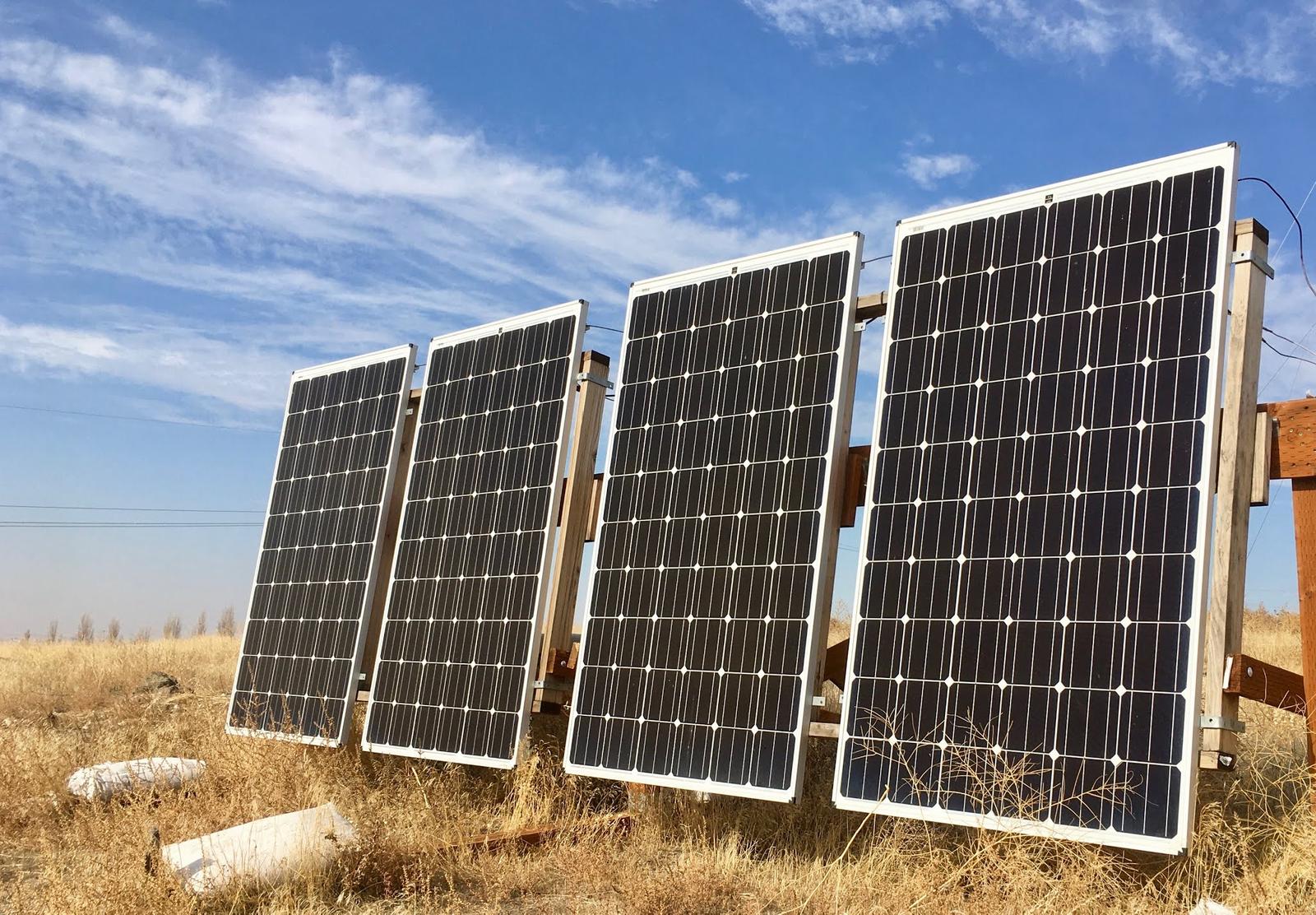
One common theme here is that the financial return on solar may be dropping in the future - which means that, all other things being equal, a less expensive system (in terms of installation and maintenance) is going to be far better than a more expensive system. This is generally true now, but I think it’s going to be especially true going forward, and this means that some of the current solar company pricing is going to be a really bad idea (if you’re planning on having solar installed). The quotes I’ve received for home solar are eyeball-poppingly bad ($3-$4/W installed for a roof mount, microinverter-based system), which is driving a lot of my decision to do the work myself. But, if you’re planning on solar, try to find ways to bring the cost down. I’ll be talking about this a lot in the future.
The other common theme is that “using the grid as your free, infinite, seasonal battery” is almost certain to go away - so don’t rely on this. The various solutions differ in how they encourage less grid freeloading, but they (mostly) try to reduce the amount of free grid utilization going to people with solar panels. This means that one might want to consider some local energy storage (batteries), but it also means that trying to optimize your self consumption is a cheap-to-free way to improve the benefits of your solar power array. Yes, this probably means “smart” things - but it doesn’t require everything in your house to have an internet connection and talk to the “cloud.” You can accomplish a lot of it yourself with a bit of attention to when you run things, and the reality is that the largest loads are typically thermal, and therefore somewhat flexible!
If you have a purely electric house (as I do), one of the easiest (and largest) loads to shift is the water heater. I often take a shower in the morning, but I don’t really care when the water heater recovers, as long as it’s not too cold out of the faucet at any point (there’s also concern about Legionella growth, but a few hours of delay doesn’t matter as long as the temperature gets high enough during the day). Delaying the recovery until the solar panels are online (or even load following up the morning ramp, if you get fancy) is a great way to consume some energy locally. Playing with the heater and air conditioner settings is another - run it hard mid-day in the sun, back it off at night, and perhaps add some thermal mass to the system. One might also consider modulating EV charging rates - our car typically charges in the afternoon, so the charge rate could follow available energy if I got fancy (and, well… you know me, I probably will).
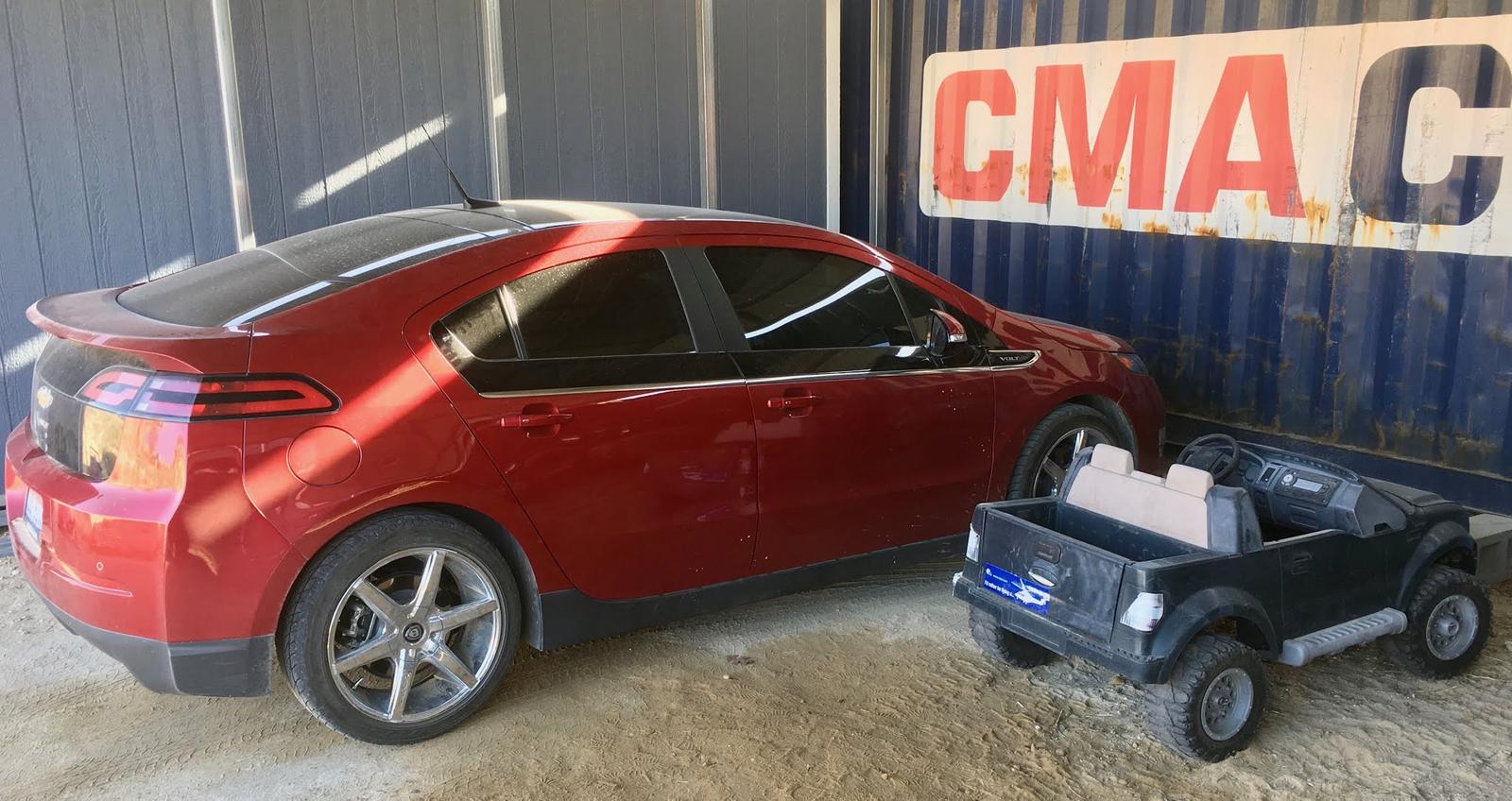
For other appliances, they either don’t really matter much (most things), or you can run them during the sun hours (dryer, dishwasher) and be fine. I’ll also suggest that looking at cooking energy might help too - an Instant Pot in the winter may be better than turning the oven on after the sun goes down. They’re quite efficient and don’t use nearly the same power that an oven does. Plus, they’re just awesome (if you’re on the fence, get one - I’ll probably talk about them at some point in the future, but we are a huge fan of ours).
You can also optimize how your panels are aimed. South facing panels produce the most energy per panel per day, but they don’t generate energy when it’s most useful. East and west panels (or southeast and southwest) will generate a far more useful blend of energy during the day, because they optimize morning and evening production at the expense of mid-day power (though still generate a lot in the middle of the day). If you have to pick one direction, southwest is probably the best, because you get afternoon and evening production. Many things can be delayed to the afternoon easily enough!
Going with east and west facing panels sounds like it would up the system costs a lot - and it will certainly add cost. But if you’re designing around string inverters (perhaps because you’re on a ground mount setup and don’t need per panel electronics to comply with NEC 2017’s cute little handout to the microinverter companies), you can just parallel the east and west strings into a single string controller (or, even better, run them to separate MPPT channels on an inverter). Just because you’ve got 7-8kW of panels on an inverter doesn’t mean they’ll actually ever produce that. They may just hold a 4-5kW output over most of the day instead of peaking at solar noon.
Batteries are always a good option, but are they actually worth it over simply improving your energy consumption? Maybe, maybe not. It depends on the system design. If you design from the ground up for batteries, they’re probably worth it - but if you have a microinverter based setup, adding AC coupling is really, really pricey, and you’d have to do the math pretty carefully to figure it out.
In all these cases, though, systems get much more complicated - which probably means more expensive.
But… but…
Yes, I know. You paid $5/W for your system and it’s your right and duty to get to use your solar panels for free, forever, because you’re helping save the planet and that’s worth, why, an awful lot! I hear this argument a lot. I still think the power grid is a thing worth funding, and I’m willing to accept that solar isn’t worth quite as much as salespeople have claimed, because of that. Trust me, I live with the realities of off grid power, and it’s not something I’d wish on everyone.
I really do like solar. I just want to see it deployed in such a way that we keep the power grid alive - and that involves some compromises. I’m quite the fan of large scale industrial solar, mostly because it works nicely with our power grid while reducing emission significantly.
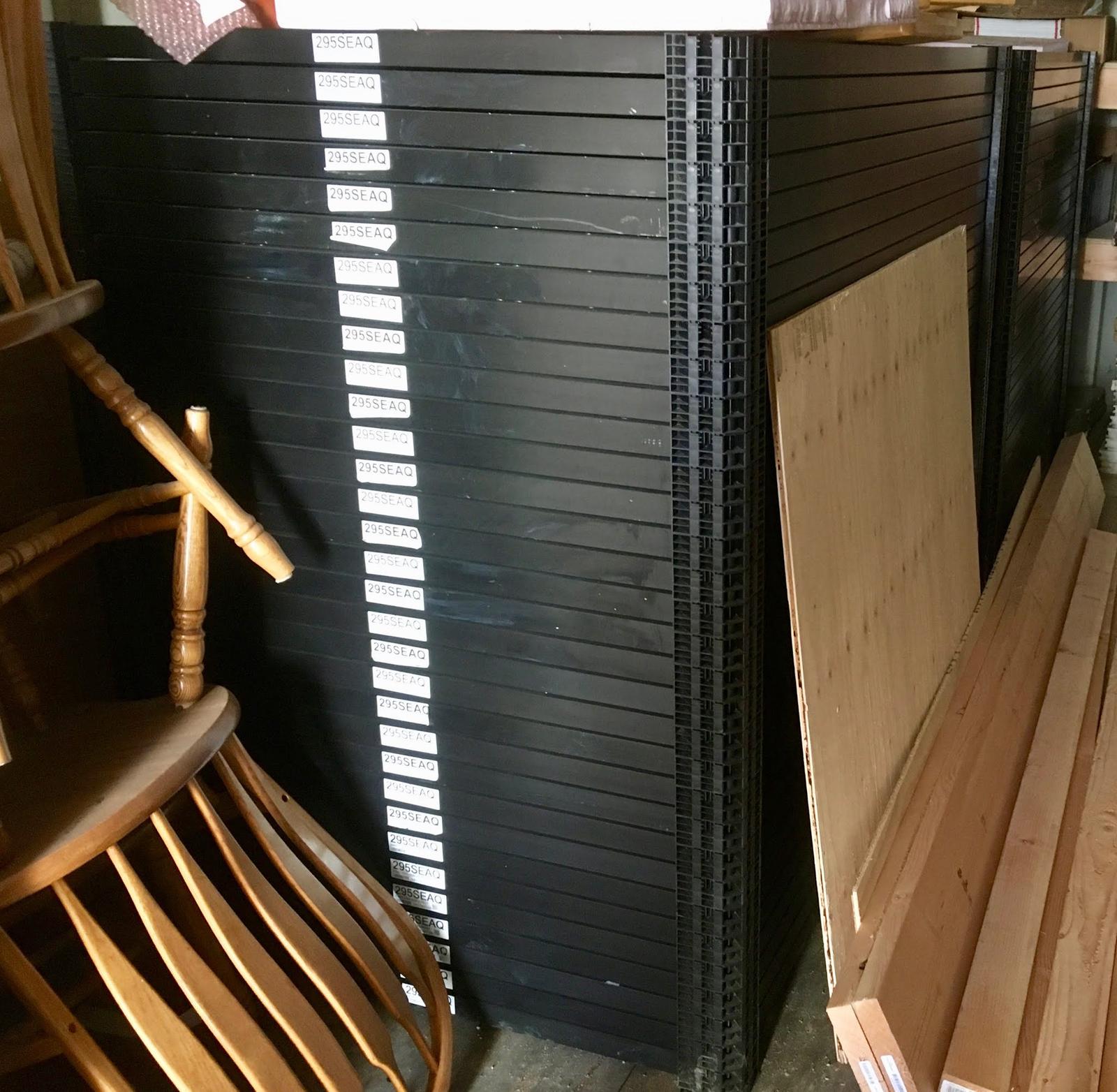
It’s late in the year, and I am actually starting on some of those promised solar posts…
In two weeks, I’ll either cover my trials and tribulations with trying to get home solar installed (and failing so far), or I’ll dive into some Raspberry Pi 4 posts. Preferences? Let me know!
<This post substantially written on Clank>
Comments
Comments are handled on my Discourse forum - you'll need to create an account there to post comments.If you've found this post useful, insightful, or informative, why not support me on Ko-fi? And if you'd like to be notified of new posts (I post every two weeks), you can follow my blog via email! Of course, if you like RSS, I support that too.
